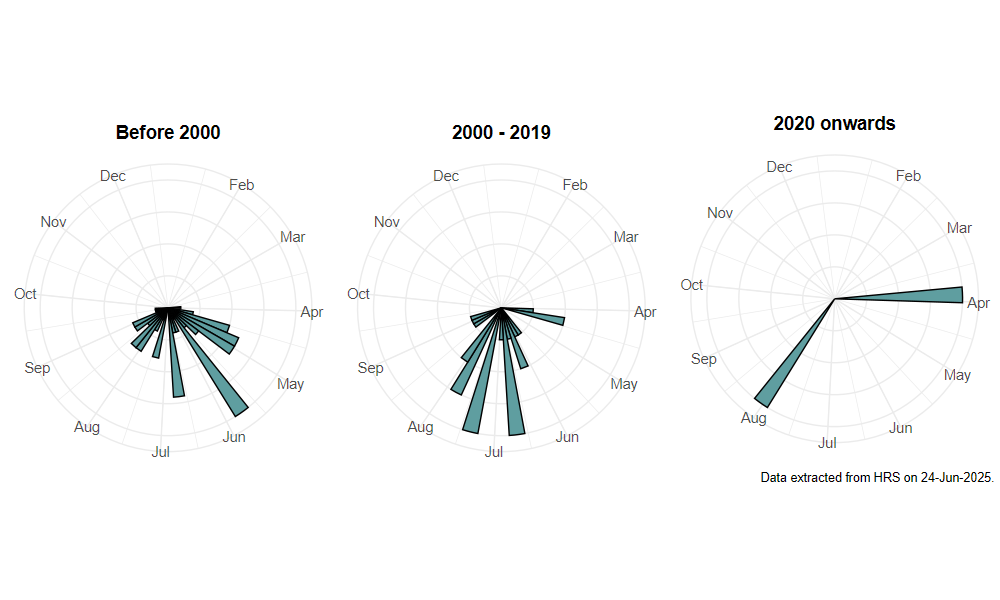Platycheirus sticticus (Meigen, 1822)
Identification
Identification difficulty = 4. ![]()
![]() according to Ball & Morris, 20241
according to Ball & Morris, 20241
Biology
The habitat preferences of adults are little known, but the species has been taken in rough grassland, along woodland edge and hedgerows up to 240m. Larval habits are also unrecorded.
Flight period
The following plots show the number of unique records per week excluding those reported to be of immature stages.

Status
Lower Risk (Nationally scarce) - Ball & Moris, 20142. Notable - Falk, 19913.
Distribution
Records are extremely widely scattered, suggesting that there are no obvious habitat affinities that might be recognised from biogeography. Although seemingly scarce, it may well be overlooked amongst commoner grey-marked Platycheirus species.

Trends
The following plots show the Frescalo TFactor vs year and a map of the rescaled frequency (all records) for the species.
-
Ball, S., & Morris, R. (2024). Hoverflies of Britain and Ireland. WILDGuides (3rd ed.). Oxford: Princeton University Press. ↩
-
Ball, S., & Morris, R. (2014). A review of the scarce and threatened flies of Great Britain. Part 6: Syrphidae. ( No. 9). Species status (pp. 1–130). Peterborough: JNCC. ↩
-
Falk, S. (1991). A review of the scarce and threatened flies of Great Britain. ( No. 39). Research and Survey in Nature Conservation (pp. 1–194). Peterborough: NCC. ↩